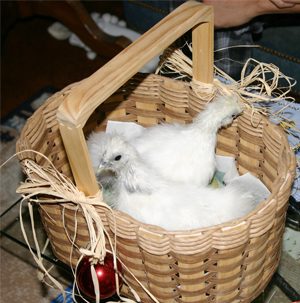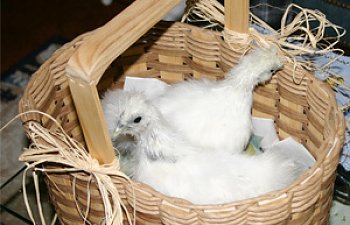Raising Chickens on a Shoestring
By Sandra Higgins Hanna
By Sandra Higgins Hanna
Whether you’ve received a couple chickens as a ‘gift’ or just couldn’t resist baby chicks, you now need housing for the little sweeties. What can you do if you hadn’t budgeted for new pets? Join many of us and ‘shoestring’ it! My white Silkie pullets were a Christmas gift. Best Christmas ever! These bantam chickens lay small eggs sometimes. For consistent egg-layers, research hen breeds before buying or taking home free hens.
Here's what I saw that Christmas morning:
Hens, Chicks. Either, Or. Buy pullets (teenager hens) or mature hens or buy chicks—not both. Pullets are the best first start because they are still small and cuddly, but hearty enough to endure petting. Pullets, hens ready to lay, or retired hens past their egg-laying days make the ideal first flock. Hens make eggs as part of their nature. (Roosters aren’t needed unless you want baby chicks or fertile eggs.) Baby chicks take special care. Putting younger chickens into an older flock is traumatic to both sets of chickens and not recommended. Starting off with baby chicks takes lots of time and effort to get the right balance of heat, housing, and feed for them to survive into healthy hen-hood.
Starting With Hens.
1. Pick a breed best for your area and your family. If you have a dog or cat, choose 6 of the biggest breed hens you can buy and introduce the hens to the leashed pet.
2. Little children need a friendly, gentle, sturdy breed.
3. Buy from a respected breeder or farmer, who's flock looks healthy and clean. Poultry hatcheries will participate in the NPIP program.
4. Check with the local SPCA. They sometimes acquire poultry needing a home.
5. Put up a “Hens Wanted” sign at the feed store. Someone may have hens they’d like to sell or give away.
Starting With Baby Chicks! If you have young children, (or you’re a kid at heart) baby chicks may come home with you from the feed store. I couldn’t resist either. Here’s what’s essential for good baby chick care. (Check out Chick Care advice in the BYC Learning Center.)

1. Draft free plastic bin, cardboard box, purchased brooder, etc.
2. Light/heat bulb and metal hooded receptacle
3.Thermometer to check floor temperature
4.Wire hardware cloth top
5.Chicken waterers/feeders
6.Chick Starter feed
7.Fresh water and bedding when needed
8.Careful handling and love, free
The Chicken Coop. You can use found items or clean out a corner of your storeroom or garage to provide weather tight quarters. Any safe, dry place will do. If you store your feed in the coop, use metal containers with tight-fitting lids set where they won’t rust. Here’s some ideas, I’ve seen used to house hens.
1. Children’s abandoned playhouse. Add wire to windows to varmit-proof.
2. Old rabbit cages in storeroom/garage.
3. Craigslist or Freecycle websites for low cost or free coops—you pick up.
Photos of playhouse and dryer repurposed by Dan Probst of www.polishfarm.com, Poetry, Texas.
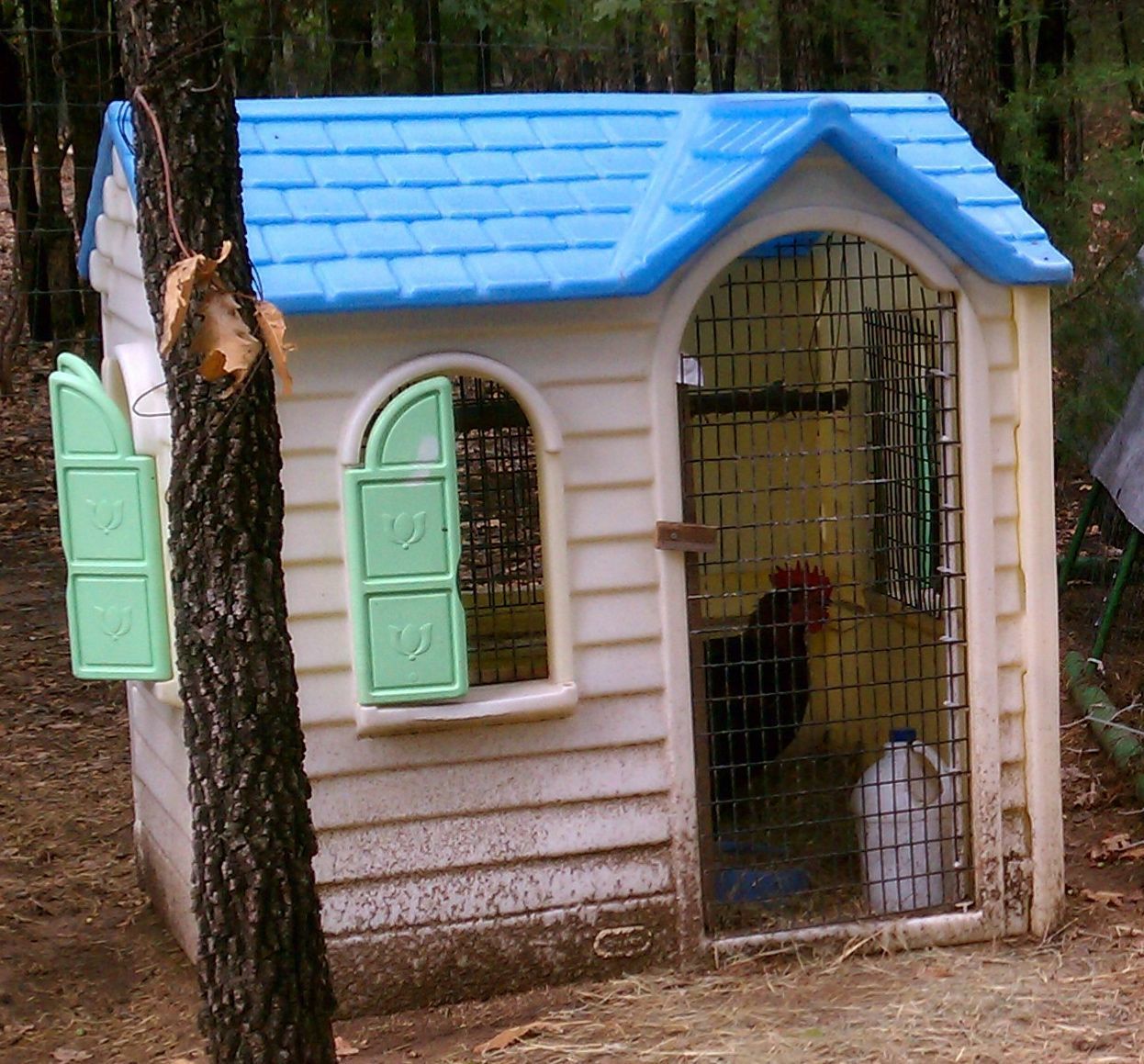
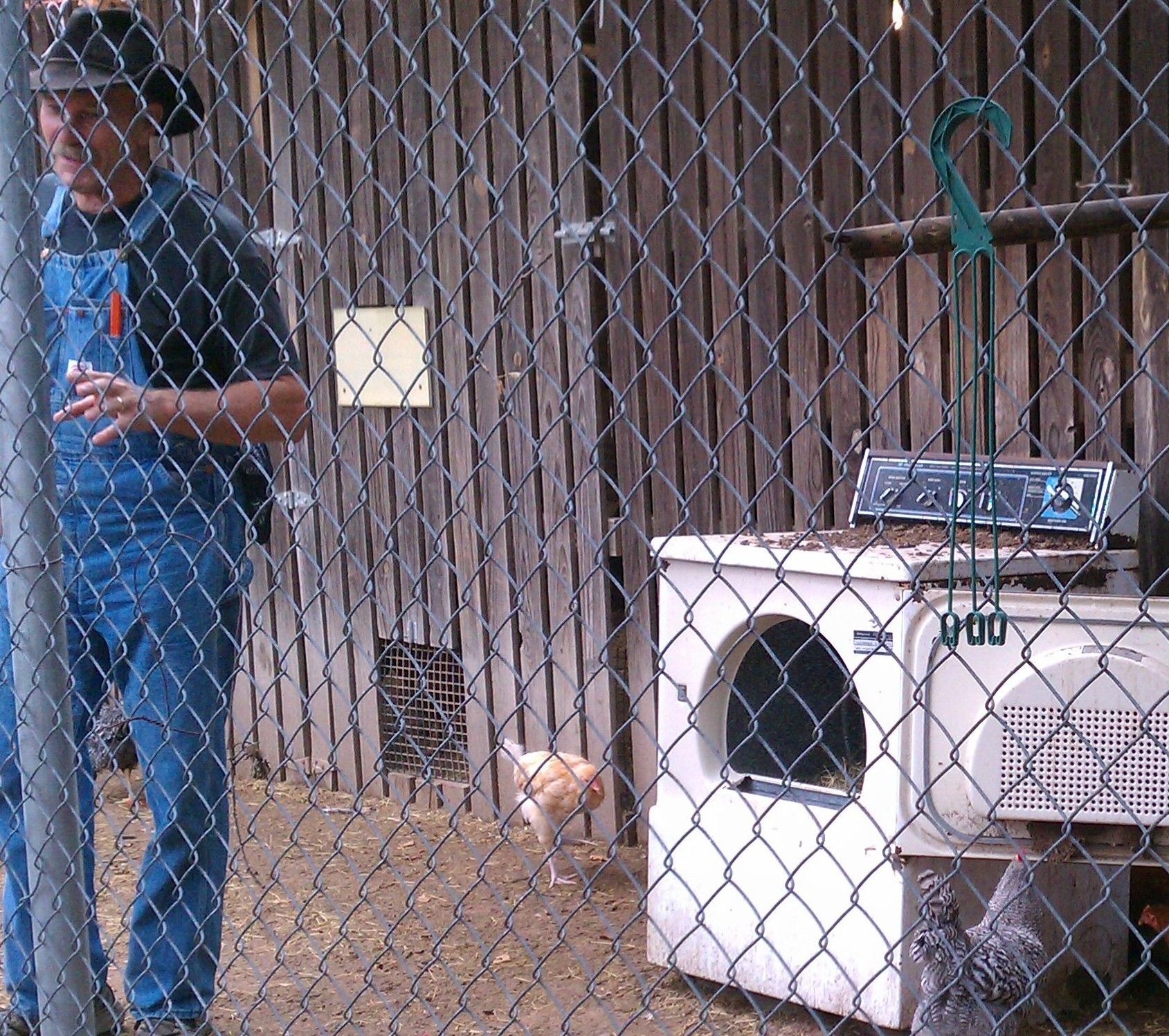
My storeroom coop cages.
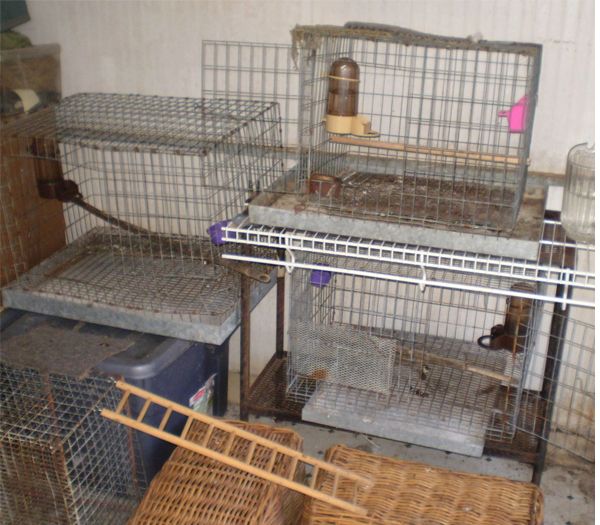
Now that they have a dry and safe coop, what about a safe place for them to run and play in the sunshine, safe from predators.
A Chicken Run. You can make a chicken run at the back of their property by fencing that portion with wire and shade cloth cover to protect from hawks. Some chicken owners fence in around a tree to ‘hawk proof’ their chicken area. Provide weather proof housing. We put our chicken run against the side or our storeroom.
Our wood and chicken wire run with shade cloth roof. The hens stay here while we’re at work, then play in our backyard until night. Dog house in run is for bad weather protection.
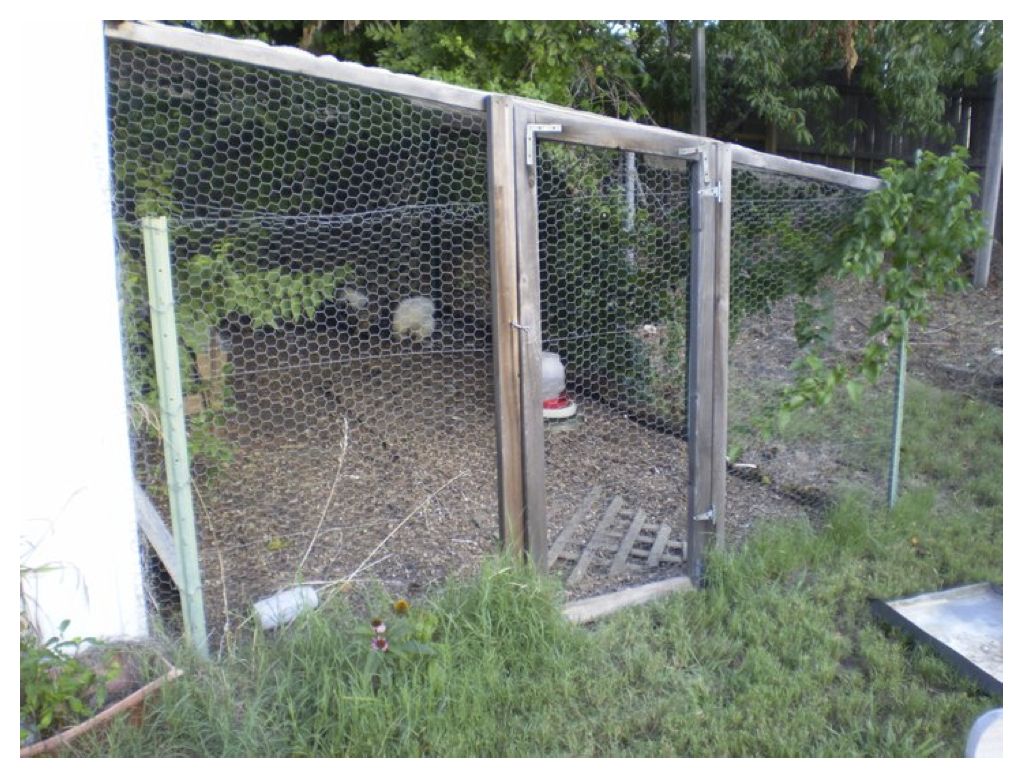
See the egg inside? See my hen, Millie?

Here’s what’s needed for a safe chicken run.
1.Wire thick enough to withstand attack by large dogs. Chicken wire is not recommended. Chain link works great.
2.Posts that won’t pull out of the ground if wire is pulled by an animal. Sink most poles (metal or wood) at least a foot into concrete or hard dirt.
3.Overhead cover to protect from hawks or animals climbing the wire.
4.Rain proof shelter for bad weather. Even an old dog house will do.
5.Ventilation in summer and heating if building will get below freezing.
Weather help “on a shoestring”.
1.For temps below freezing, fill coop with straw for hens to burrow into.
2.Put up incandescent lights or electric heater* to warm a small coop with concrete flooring and hens secured away from the heater. For your normal coops with hay or sand for flooring, try to keep the roosting area just snug enough in the winter for the girls to use their body heat to stay warm.My storeroom was kept very clean and nothing combustible was near my little heater which was only used on the bitterest of winter nights. NEVER USE ELECTRIC HEAT OR HEAT BULBS IN YOUR COOP.
3.Rain-proof openings with plastic sheets or tarp material.
4.Screened ventilation windows, or a rotating passive exhaust unit.
5.Fill shallow plant saucers with cool water for summer chicken wading and splashing.
6.Freeze liter water bottles for hens to sit next to on extremely hot days
If you can spend a little.
1. Thermostat controlled fan to exhaust hot coop air.
2.Misting unit for part of chicken run in extreme heat
3.Add cracked corn, crimped oats to feed and vitamins supplements to water.
Chicken Run Flooring. You need flooring to absorb and help the poo dry. Straw, pine shavings or sawdust is good to use. These materials keep flies and disease away when it is replaced when needed. Some flooring is done by the ‘deep litter’ method, whereby you lay down a 4-6 inch layer of straw, pine shavings or sawdust, turning it when the top layer gets soiled. I heard it can last for around 6 months. I use sand and bagged leaves we collect from our trees to use in our outdoor run. Rake your material each week, removing the most soiled areas. When flooring needs replacing, dump the used stuff in your compost pile and give it a good tossing. Most “shoestring budgeters” find free straw or sawdust on local Craigslist or Freecycle sites, wood working shops or even the local high school if they have a wood shop. Compost that contains chicken poo is perfect for veggie or flower gardens.
Chicken Poo is great fertilizer the hens give you free! It can be used by itself, when dried, on veggie or ornamental gardens. My hens sleep in old rabbit cages with trays underneath. Their poo goes through the wire bottoms where it dries. I collect the dried poo once a week for a neighbor. He and I share the dried poo as well as the eggs. Don’t allow poo to get moldy or cause flies to congregate, bringing disease to your coop. Remove poo at least once a week. I make sure no poo stays on the bottom wire to keep chicken feet clean. I disinfect the bottom trays with 1/2 cup bleach to a gallon of water once a month.
Here's what they look like. The trays are easy to tip into a bucket each week.

A Chicken Tractor. If you have an acre or more, you can make an inexpensive “chicken tractor” from PVC pipe or wood and hardware cloth to safely put your hens outside. It looks like a wire box turned upside down. These materials can be leftovers from other projects, but aren’t expensive to buy. For every hen, give them 3 or 4 square feet play room. This means if you have 6 hens, make your chicken tractor 2 feet tall (so they can stretch and flap), 4 feet wide and 6 feet long. Include shade and rain protection, food and water. Move the tractor to fresh ground each evening making sure you don’t trap a slow-moving hen. If you attach a small coop to the tractor, the hens will go inside and lessen the risk of hurting a hen. Put wheels on the coop or tractor using repurposed children’s wagon wheels. It is the recommended ideal to have enough land so your chicken tractor doesn’t return to the original spot for a year. For small farms, just use a tiller on the used spots so you can return there when the grass matures.
Tractor examples built by BYC members. Search “chicken tractor” or “duck mobile” in BYC.
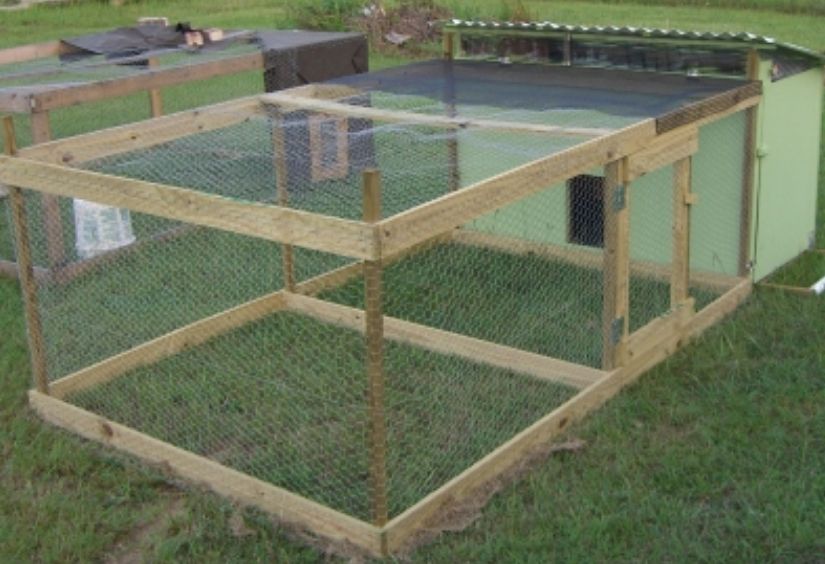
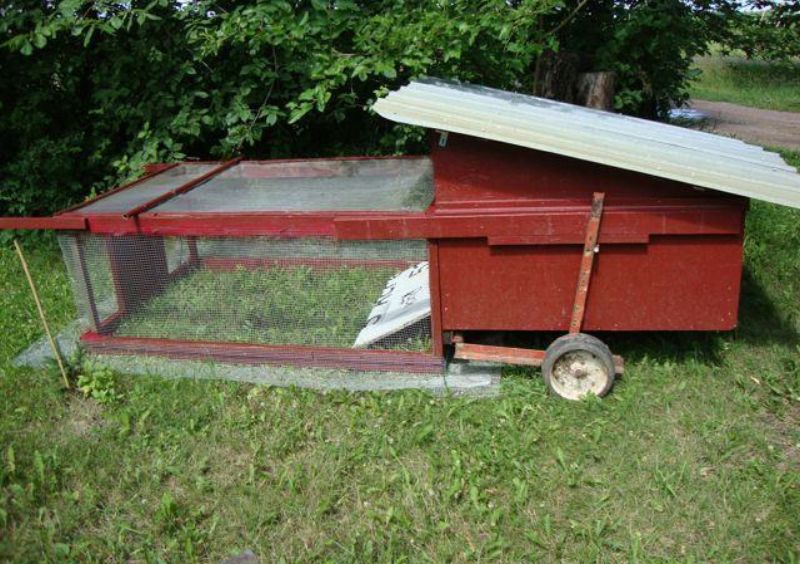
Predators. Typical suburban predators are hawks, dogs, cats and maybe even a possum or raccoon. Shoestring protection can simply be a piece of plywood secured against the coop opening or pegs holding down your chicken tractor. My storeroom can be latched and the repurposed rabbit cages also have latches so even if a predator hides in the storeroom, the locked cages protect them. I sprung for an inexpensive baby monitor (try garage sales, thrift stores, or ask a friend with kids.) so I could hear my hens at night.
If the hens get alarmed, I can hear and go check. It gives me peace of mind and only cost me $20 new. There are wireless models that take batteries and some that transmit long distances, good for those folks with coops on acreage. Rural homes sometimes have predators like coyotes, wolves, or even wandering dogs. You can anchor your chicken tractor to the ground with wooden stakes driven through the wire into the ground. If you can spend a little, I have heard some folks successfully use those auger style pet stakes. Your hen’s night quarters need to be secured so that a smart predator cannot open it. If the coop door is held shut by a simple swivel latch, make a hole in the latch and through the wood door frame. Push a big nail into the drilled hole so that the latch can’t swivel. Just that can predator proof a simple coop.
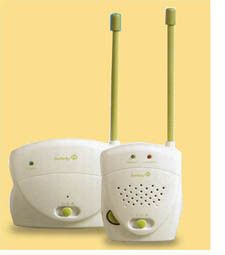
Joy is Free. The joy you and your family receive watching your hens and collecting their eggs is the best free thing about raising chickens. Since the Christmas of ’06, I and my husband have shared our suburban backyard with our flock of hens. Our rescue dog, Reggie, has been trained to be respectful of the hens. Even on a ‘shoestring’, we’ve been able to provide our hens a happy and healthy life. We enjoy chickens on our shoestring budget! I can’t imagine my life without my sweet and amusing hens.
*at the time I wrote this piece, our 'coop' was a concrete floored storeroom and I used old rabbit cages fitted with roosts. the electric heater was carefully placed so nothing within 3 feet was combustible. Also all the hens had their own 'house' and were locked securely inside until morning. With the baby monitor on at night, i could hear if something was going wrong like an electrical short--the girls would squawk alarm. So for this particular incidence, the heater was OK to use.
Next read: "How Much Does It Cost To Raise Chickens"

